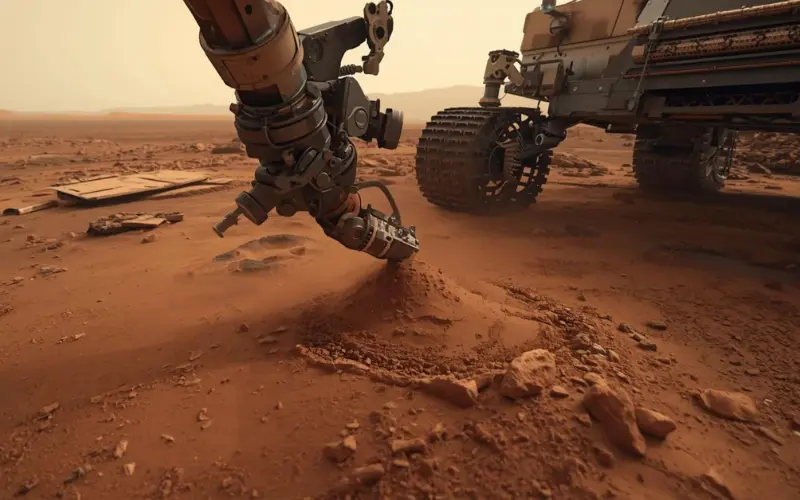

Energy harvesting on Mars is crucial for ensuring the sustainability of resource extraction operations and human missions. To address the challenges of limited sunlight and harsh environmental conditions, multiple energy sources will be utilized to meet the power demands. One promising solution is geothermal energy harvesting, where heat from Martian volcanic regions will be tapped using specialized boreholes and geothermal power plants. The heat extracted will power turbines, thermoelectric generators, and resource extraction systems, ensuring continuous operations, especially during periods of low sunlight or dust storms.
Another potential energy source is solar power, with high-efficiency solar panels deployed across Martian bases and extraction sites. Solar energy will be converted into electricity to power smaller systems and be stored in batteries or thermal energy storage systems, such as molten salt tanks, for use during the Martian night or low-sun periods. In addition to geothermal and solar energy, wind power could be harnessed, especially during Martian dust storms, using aerodynamic turbines designed to withstand the planet’s thin atmosphere. Nuclear power could also be an option, with small modular nuclear reactors providing a reliable source of energy for large-scale extraction operations and human habitats. By combining these diverse energy sources, a robust and reliable energy infrastructure can be established on Mars, ensuring that resource extraction systems, habitats, and scientific research stations are all sufficiently powered while maintaining ecological sustainability.

Ensuring environmental and ecological safety during resource extraction on Mars is vital to prevent contamination and maintain the planet’s longterm habitability. One of the key methods for ensuring safety will involve rigorous site selection, choosing volcanic regions that have minimal ecological value, avoiding areas that may harbor subsurface water or potentially microbial life. Advanced environmental monitoring systems will be deployed to track potential contamination from extraction processes, ensuring that local habitats and any existing Martian ecosystems remain unaffected. These monitoring systems will use sensors to detect pollutants or harmful emissions during extraction and refining, providing real-time data to adjust operations.
Read: https://exospace.co.in/advancing-resource-extraction-methodologies-on-mars-part-5/






Robots in Charge: How Automation is Shaping Our Future The twenty-first century is commonly referred to as the “age of intelligence” — not due to the fact that human beings have suddenly grown intelligent, but simply because machines have. From factory robots putting together automobiles to AI-driven assistants controlling supply

I took over as Editor-in-Chief of Wavelength without knowing that I was enrolling not just to edit a magazine, but to etch out a vision. Wavelength has evolved from a biannual science magazine to an interdisciplinary odyssey of ideas — a place that is true to how imagination and intellect

Space has intrigued me (infinitely) since childhood. I developed my interest in astronomy with late-night stargazing hours and made it more intense after watching India’s Mars Orbital Mission lift off in 2013. My curiosity became a passion to not only learn about space, but to make valuable contributions to our